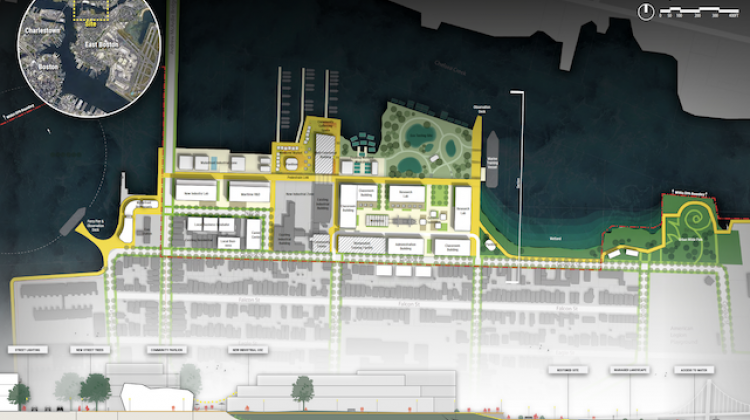A Toolkit for Planning Forward-Looking Port Areas in Massachusetts

East Boston’s coastal land is included within two separate Designated Port Areas, a state designation that impacts what can and can’t be built. This designation is meant to preserve areas that are suitable for waterfront industrial uses. As East Boston’s history of activism and community organizing has made clear, industry has been in direct opposition to environmental justice goals in the neighborhood. Industrial uses–without accountability mechanisms and public oversight–have contaminated land and water, limited public access to the waterfront, and created other conditions that currently exist as challenges in East Boston. In addition, industry’s proclaimed economic development potential on a regional scale has not been realized locally in East Boston, where 45% of renters face an elevated risk of displacement. Despite carrying the environmental and public health burden of industry, East Boston residents, the majority of whom identify as Hispanic or Latinx, do not gain access to wealth-building opportunities and long-term stability.
However, DPA policy takes a regional perspective and is inflexible to proposals that run counter to its intent of preserving waterfront industrial land. Over time, DPA boundaries can be reviewed and changed, but the regulation does not proactively shift its boundaries to accommodate non-compliant projects. This toolkit suggests that, within the seemingly rigid and undesirable bounds of the DPA, there is room for creative, forward-looking, and community-led planning solutions. Of course, policy priorities shift and regulations can be lifted, and local activism and advocacy can precipitate more fundamental changes to DPA policy. In the meantime, collaboration between local residents, the municipality, mission-driven developers, and industry, can transform DPAs from disinvested, contaminated, and partially abandoned sites into clean, adaptable sites for blue jobs and environmental justice. The following toolkit contains strategies to inform that collaboration, and a possible Municipal Harbor Plan, with the hope that DPAs can become future community assets.


